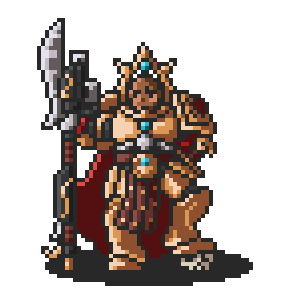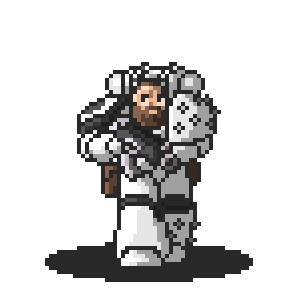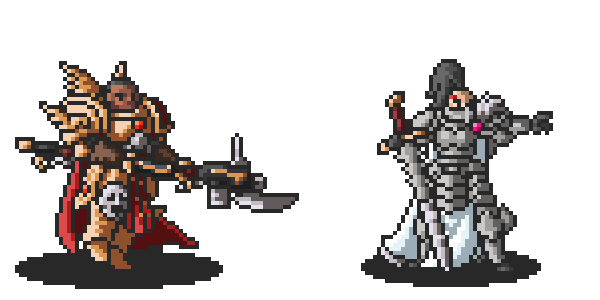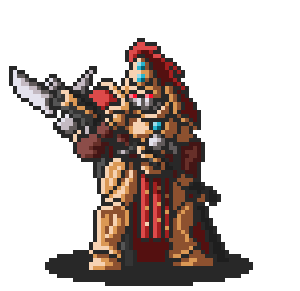
The Story
The heaviest blow against the Emperor’s works was not one driven by hatred, but by good intentions. When Magnus the Red used forbidden powers to send a warning to Terra, his father’s Great Work was set aflame. This Omnibus turns its gaze towards the seat of the Imperium, the Throneworld itself, to examine the cost of Magnus’ folly. It takes a closer look at the guardians of the Throne, the golden-wrought Custodes, and the Master of Mankind Himself. Who is this mysterious figure at the helm of humanity’s fate? Can His great work be salvaged from the brink of destruction? Or have the Dark Gods already won?
Reading Order
- The Last Church (ToH or LW)
- Blood Games (ToH)
- The Outcast Dead
- The Sigillite (TSW)
- Wolf Hunt (TSW)
- The Master of Mankind
- Bringer of Sorrow (eShort)
- The Binary Succession (TBoL)
- Ordo Sinister (TBoL)
- Dreams of Unity (HotS)
- Magisterium (HotS)
- The Last Council (eShort)
- Two Metaphysical Blades (eShort)
Why this Reading Order?
An omnibus about the Emperor. What would that even look like?
The Emperor is at once the most prominent character of the whole setting of Warhammer 40,000 and at the same time the one we know the least about. He’s the gravitational centre of both the universe of 40k as well as the preceding era of 30k. The formation of the Imperium of Man across the Unification Wars of Terra, the creation of the primarchs and the Astartes Legions, the Great Crusade, the Horus Heresy and all the horror that follow suit, none of that can be talked about without the Man Himself. And yet He is a black hole, a cypher wrapped in an enigma: Where did He come from? What did He want? What is He, actually?
All of these questions have been and will continue to be discussed to death by fans of the grim darkness of the far future. After his portrayal of the Emperor in The Master of Mankind spawned controversy because it seemed to contradict the understanding some fans had of the lore and was by some even accused of being inconsistent in its portrayal, author Aaron Dembski-Bowden talked in 2018 on reddit about his reasoning behind writing the Emperor as he did:
[...] The Emperor was a lot of things. No one knows what. TMoM is consistent with that, and was planned for it with several peeps, and combed through afterwards by IP-drenched eyes, to that effect. This quote might help, form my Reddit AMA:
“The Master of Mankind is entirely from the perspectives of people that meet the Emperor in pretty specific circumstances. There are, obviously, other circumstances to come. Nothing in it is definitive, even less so than my usual work. Any definitive statement you can make about how the Emperor sees something or does something is almost always contradicted in the book itself. That's not an escape clause or an excuse. It's the point. Writing him definitively would've been the easiest and most disappointing thing in the world.[...]
With the Emperor, a lot of interaction is about getting out what you put in. You get what you give. Your perceptions and expectations are reflected back on you because that's how the human brain perceives everything [...] especially when you're talking about someone who exists on that plane of power. At one point the Emperor makes mention of the notion that he's not even speaking, that being near to him allows the conveyance of meaning through psychic osmosis, and communication telepathically. He's not even talking. It's raw understanding filtering through a mind, or just the way the mortal mind comprehends the aura of what the Emperor intends, or, or, or... That's what I mean. TMoM is littered with that stuff. Does he only address the primarchs by number instead of name? Some characters will swear he does that, and doesn't that just perfectly match their perspectives of the primarchs as either emotionally-compromised "too-human" things that think they're sons (Ra), or genetic masterworks that have become galaxy-damning screw-ups that have literally let the galaxy burn and brought the Imperium to its knees, leading people to be exiled from their homeworlds (Land). Do you think Sanguinius will agree? Or care that's what mortals think? The Emperor's portrayal on that isn't even consistent between Ra and Diocletian, two of his Custodians - and on PAGE ONE, the only time he interacts with a primarch himself, and the one and only thing he says to Magnus the Red is...? "Magnus."
I can recommend checking out the whole thing; Dembski-Bowden (or ADB for short) is quite the eloquent and engaging speaker/writer when talking about this kind of stuff. I wanted to illustrate with this rather long quotation what a controversial and substantial character the Emperor is for the setting.

For the Omnibus Reading Order, I originally planned to pair The Master of Mankind with Graham McNeill’s Mechanicum. The first scene of Mechanicum could have come straight out of The Master of Mankind, depicting the first encounter of the people of Mars with the Emperor of Earth. It’s told through the eyes of a Knight of Mars, whose experience of the encounter will be fundamental in the future relationship between the Martian priesthood and the Emperor as well as the alliance between the Red and the (formerly) Blue Planet: The “Omnissiah” had finally arrived on Mars. Perspective is, as ADB so deftly explained, essential when it comes to the Emperor, and I wanted to use that as the guide for assembling "the Emperor-omnibus".
Short stories like The Last Church and The Sigillite or novels like The Outcast Dead and The Master of Mankind itself play heavily with that, providing the perspective of different people on the Master of Mankind. A furtive priest, a vision-plagued Navigator or Malcador the Sigillite, each one of them has their own perspective and understanding of the Emperor. The portrayal of “Big E” might seem contradictory across His various depictions, but can also be viewed alongside ADBs explanation as a necessary effect of His fractured, multifaceted being and, because we only ever see him through the eyes of others, a heavy dose of subjectivity.
I later decided against compiling Mechanicum and The Master of Mankind in the same omnibus, because they are just too far apart from each other timeline-wise to be put in a fitting flowchart-spot to be read as one “package”. It also became clear that The Outcast Dead would have to go alongside Master. My solution was to split the “Omnissiah”-omnibus in two, so the first part with Mechanicum could be read quite early on in the reading order while the second part with Master of Mankind would be read near the end.
As it is, Omnissiah II: End of Empires is mostly about three things. Firstly, as discussed abov, the Emperor. It's also secondly about the Emperor’s bodyguards, the golden Custodes, and thirdly about the Throneworld, specifically the fall-out of Magnus’ decisions for the Emperor’s secret plans on Terra.

The Outcast Dead is mostly about the third thing. While Terra only appeared in short scenes and asides before, The Outcast Dead is the first novel that’s completely set on the Throneworld. It shows the effects of Magnus’ ill-advised sending of a psychic warning as it is experienced on the surface of the Throneworld. A lonely Navigator suffers a crucial vision in the wake of this catastrophic event that makes him a target for some of the most dangerous beings on the planet. He becomes entangled in a prison escape by a group of Astartes that had been left behind on the Throneworld prior to the Heresy, but who are now accused of treachery because their Legions have declared war on the Imperium in their absence. The short story Wolf Hunt is a sequel to Outcast Dead that shows the fate of one of the prison escapees that survive the end of the novel.

Where Outcast Dead gives glimpses and dire premonitions about the true scope of what’s going on underneath the Throneworld, The Master of Mankind really delves into the heart of the matter. It shows the true horror of what Magnus unleashed and shows the Custodes and the Mechanicum frantically trying to save what they can of the Emperor’s great design from the disaster. The Master of Mankind and the short story The Binary Succession are also the closing chapters of the story-line of Mars and the Martian Priesthood that started in Omnissiah I: Death of Innocence.

The Custodes are present all across the omnibus, starting with Blood Games, one of the very first Horus Heresy short stories. The Custodes are a unique faction of the military armadas of the Imperium and The Master of Mankind is, among other things, also very much “the Custodes book”. The Heresy book series did a lot to give the Custodes their own character and establish them as their own faction on the panoply of 40k, and Master of Mankind is one of the big centrepieces for that.
The short stories assembled after The Master of Mankind are either epilogues to the novel or bridges to the Siege, showing final preparations and meditations before the inevitable arrival of Horus and his infernal host. The short stories The Board is Set and Now Peals Midnight would have been great closing chapters to the omnibus, but because they are literally “the clock strikes twelve”-stories I decided to move them one omnibus further into Through the Neath. It just felt wrong to include them in a spot where the next stop isn’t the Siege itself.
Additions from 'The Primarchs' & 'Horus Heresy Characters'
Valdor: Birth of the Imperium by Chris Wraight is - maybe with the exception of The Last Church (s. Reading Order above) - the Black Library story that's set deepest into the past of the Imperium. It takes place during the final motions of the Unification Wars on Terra, when the Emperor was close to seizing total control of the Birthworld through the combined might of the Thunder Warriors and his Custodes. Told from the perspective of Constantin Valdor himself, the book is a treasure trove of lore that's normally only mentioned in passing and sheds light on some of the bloody foundations of the Imperium. Here's Chris Wraight talking about the book.
Required and Recommended Reading
The events of both The Outcast Dead and The Master of Mankind happen in direct response to Magnus' deeds in The Burning of Prospero. Read this beforehand.
The Mechanicum's story-line in Omnissiah II, especially in Master of Mankind and The Binary Succession, is a direct sequel to Omnissiah I: Death of Innocence.
Together with Omnissiah I and Scale and Stone, Omnissiah II forms a loose "Solar System"-trilogy. Scale and Stone is more loosely connected to the other two, but complements Omnissiah II by showing in its climatic novel the second pre-Siege attack on Terra ("above ground" by the Alpha Legion in Scale and "below ground" by daemons in Omnissiah II). Reading all three omnibuses completes the events on Terra and Mars and brings one mostly up-to-date with the status quo on the Throneworld directly before the Siege. In which order you read Scale and Omnissiah II is mostly up to you, although I feel that reading Scale and Stone first has a more natural flow to it.
Follow-Up
See above: If you haven't already read Scale and Stone, I'd recommend you to do it now to experience the second side of the coin of the pre-Siege attacks on Terra.
The final war effort before the Siege itself is the Great-Slaughter of Beta-Garmon, about which you can read in Shadow of the Warmaster IV: The Dead and the Dying . Where Omnissiah II brings the soon-to-be-besieged ready and up on the walls of the Imperial Palace, The Dead does the same for the besiegers.
The final Omnibus focusing on the Imperial side of the war is Through the Neath, which also picks up the Thousand Sons' up again after The Burning of Prospero.
Required Books
Novels (in order of appearance)
- The Outcast Dead
- The Master of Mankind
Anthologies (in order of appearance)
- Tales of Heresy (ToH)
- The Silent War (TSW)
- The Burden of Loyalty (TBoL)
- Heralds of the Siege (HotS)
- ALTERNATIVE: Lupercal's War (LW) (s. notes below)
eShorts (in order of appearance)
- Bringer of Sorrow
- The Last Council
The anthologies listed above together contain every short-story and novella assembled into the reading order for this omnibus. Instead of buying whole anthologies, you also have the option of buying any of the individual stories from the reading order as an individual eBook. The price per story is higher when buying individual eBooks compared to buying them as part of an anthology.
eShorts are stories that have so far only been made available as stand-alone digital products and are not included in any of the Horus Heresy anthologies.
An alternative source for The Last Church is the anthology Lupercal's War (LW). It was released as a "Start Here" option for readers alongside the 2nd edition of the Horus Heresy tabletop game in 2022. The collection contains 18 short stories picked from across the numbered Horus Heresy anthologies as well as 3 stories that were previously only available as eShorts (Child of Chaos, Bloodhowl & Champion of Oaths).
Beyond the Heresy
The following are recommendations from other series and the wider Black Library canon. If you are interested in the characters, factions or themes that were part this omnibus, the following books might also be to your liking. Books from the 41st millenium:
-
Watchers of the Throne-series by Chris Wraight, starting with The Emperor’s Legion
- Ten thousand years after the Heresy, the Custodes have become stagnant and reclusive, while the Sisters of Silence are scattered and almost forgotten. When a new age of darkness looms over the Imperium, the Talons of the Emperor have to find a way to realign again. Told from the first person perspective of a Custodes, a Sister or Silence and the Chancellor of the Imperial Senate, this is a truly spectacular book which shows the highest echelons of the Imperium reacting to a true change of ages. It was followed by a sequel (The Regent's Shadow) and will probably be turned into a proper trilogy at some point. Here's Chris Wraight talking about The Emperor's Legion
-
Vaults of Terra-trilogy, also by Chris Wraight, starting with The Carrion Throne
- If you liked Terra as a setting, this is the series for you. Almost a complementary series to Watchers of the Throne, this delves instead into the grim underbelly of the Throneworld alongside an Inquisitor and his Interrogator who uncover a conspiracy that could threaten the very foundations of the Imperium. The Hollow Mountain and The Dark City complete the trilogy. Here's Chris Wraight talking about The Hollow Mountain and the series as a whole (at that point)